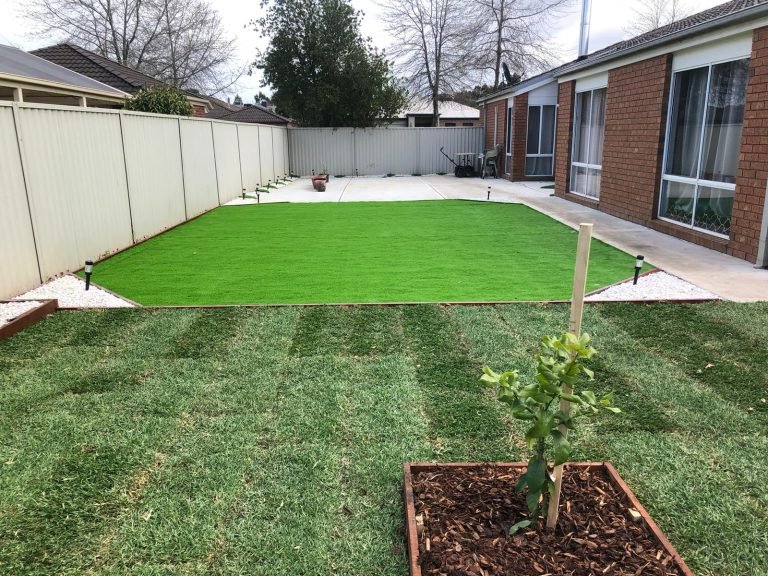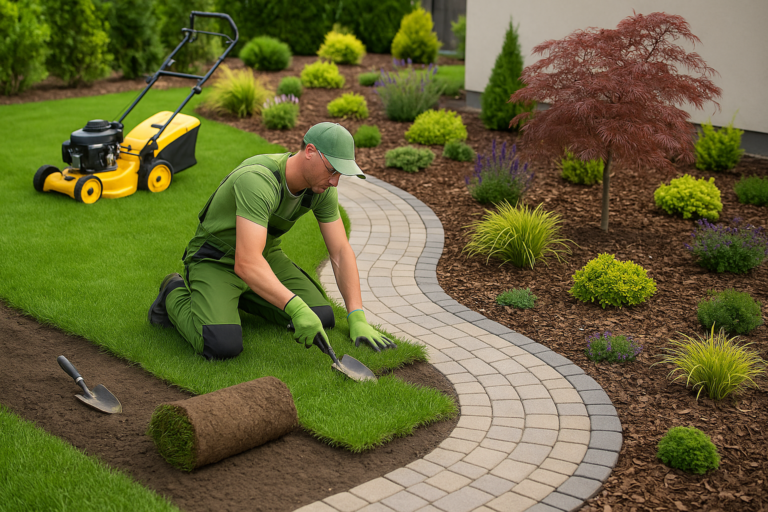10+ Landscaping Tips For A Gorgeous Green Lawn
10+ Landscaping Tips For A Gorgeous Green Lawn
Many people consider having a green lawn to be their dream home. A good quality lawn certainly makes the property more appealing, but provides an instant peaceful outdoor area for your relaxation and party use. Such a lawn actually sounds very difficult but, this can be rather easy if you use some of the right tactics. The 10 best Landscaping ideas To grow a lush and alive lawn

-
Use This Grass Type to Go with Your Climate
Choosing the correct grass for your area, is the first critical element in getting an amazing lawn. Grass species live best in different climates Generally cool season grasses such as Kentucky bluegrass and fescues are for cool climate whereas warm-season grasses (Bermuda, Zoysia) work best in warm regions. Check out the climate and soil conditions of your locality for what grasses are the best to plant your lawn.
A healthy soil equals a healthy lawn. Take a soil test to find out your soil pH and nutrient status; go ahead and that will help. Grass generally likes a pH between 6 and 7. For soil pH that is not ideal, lime or sulfur can be used to amend. Break up compacted soil with a core aerator to enhance drainage and roots can get oxygen. Adding organic matter (compost) also increases the fertility and structure of the soil.
-
How to mow for healthier lawns
Mowing is an important part in keeping your lawn look good and healthy. The correct height of the grass for your type should be set on the mower, mowing too low just puts the grass under more stress and more likely to have weeds. As a general rule, try not to take out more than 1/3rd of the grass blade at one cut. Always give your mower blades a good sharpening, you do not want to make those poor blades cut as they are key to preventing diseases.
-
Best Practices for watering
A lawn that is watered correctly Water thoroughly, then less often to promote deep root development. Lawns need about 1-1.5 inches of water per week combined from rain and irrigation The best time to water is in the morning because it does not lead to evaporation and keeps the grass dry or almost dry in evening hence reducing chances of fungal diseases. Too Much Water: Leads to shallow roots and an increased likelihood of disease a Over.
-
Fertilizing in order to grow properly
Fertilizing is one of the most important steps in the management of nutrients your lawn requires to be healthy. Select a fertilizer appropriate to your grass and time of year. Cool-season grass responds well to fertilization in the early spring and again in the fall for me, warm-season grasses benefit from feeding during the summer. Use slow-release or organic fertilizers for feeding your lawn so that it does not get burned.
-
Weed Control Methods
Without proper tending, weeds can overrun your lawn. Dense, Vigorous Lawns are your number one weapon for weeds. Consistent mowing, fertilization and irrigation lead to conditions that are unfavorable for weeds to grow. Try vinegar or the store bought herbicide according to specific type of weed for existing weeds, or hand-pulling if you have just a few.
-
Pest Management
Grubs, chinch bugs and armyworms are lawn pests and they can really take a toll on your lawn. Check your lawn for pest infestations such as brown patches or chewed blades. Release beneficial insects for example ladybugs or introduce nematodes to eat pests without chemicals. But if it still happening, you may need to use a specific pesticide but the manufacturer also says not to let it spread further harmfully.
-
Roots Aeration
One of the neglected practices which works miracle at your lawn is aeration. Aeration through which you are making small holes in the soil to promote aeration,water and nutrient penetration. It really comes into play with heavy dense soil or high foot traffic. The best time to aerate the lawn is during the growing season of your grass type, this allow for quicker recovery.
-
Seeding or overseeding your lawn.
There are no better ways for you to have a dense green patchy lawn than seeding and overseeding. Overseeding: spreading grass seed on an existing lawn to seed bare patches and boost density. Select high quality seed that is appropriate to your type of grass and region. For optimum results, overseed cool-season grasses in the fall, and warm season grasses in late spring. The seeds must be touching the soil and water them frequently until growth begins.
-
Landscaping with Trees and Shrubs
Trees and shrubs in the borders of your lawn — it will not only look good but also have some practical purposes at the end of it. Trees in the right places provide shade, meaning the evaporation of water and cooling for your outdoor living. Flowerbeds and shrubs add vibrant, balanced looks. If you are planting near the lawn, keep in mind the root system of trees and shrubs to not compete each other for soil nutrients & water. By following these top 10 landscaping tips, you can transform your lawn into a lush, green paradise. Remember, consistency and patience are key. With proper care and attention, your lawn will thrive, becoming the perfect backdrop for outdoor activities and a source of pride for years to come.







